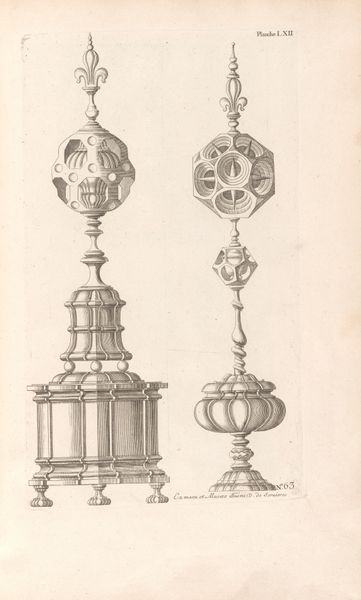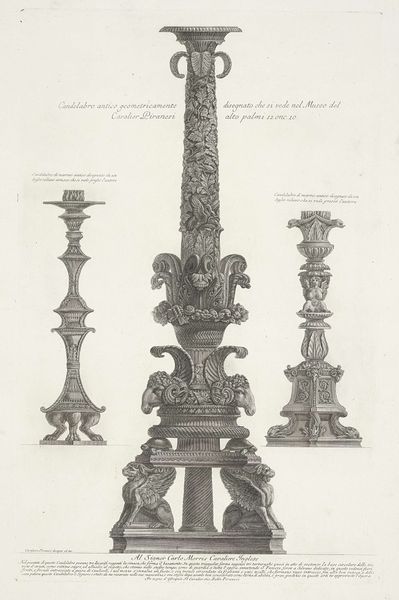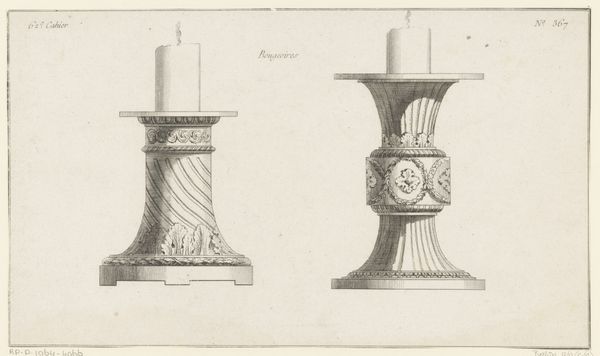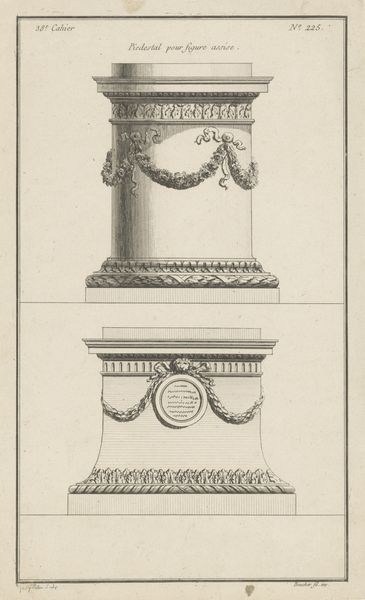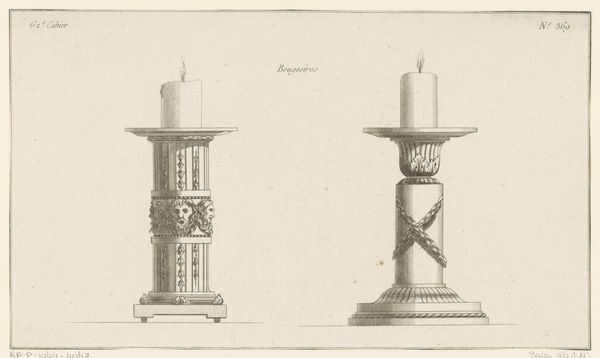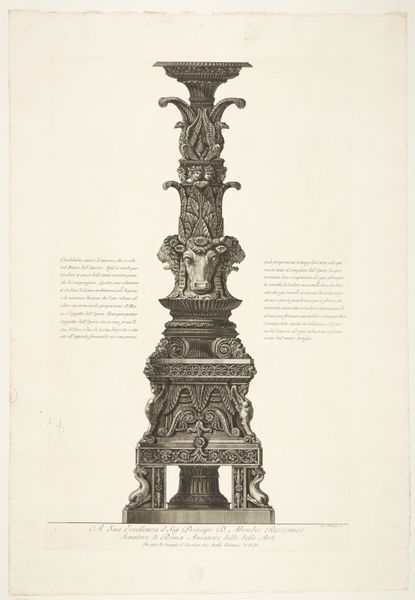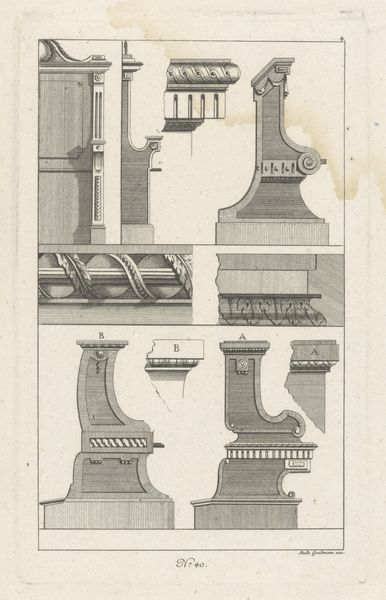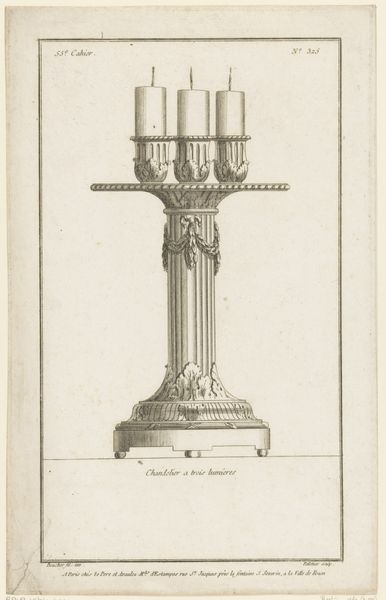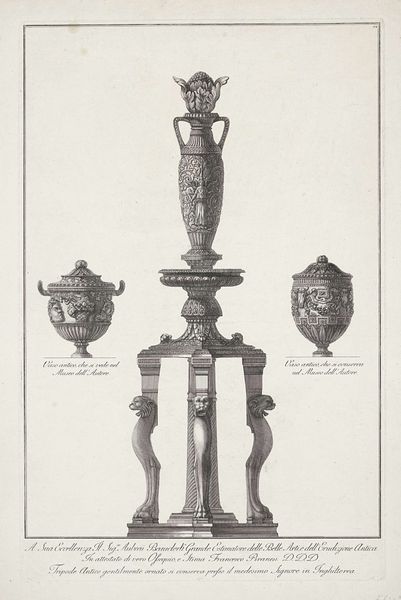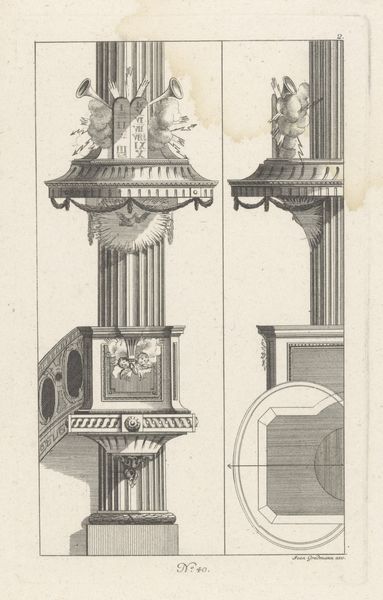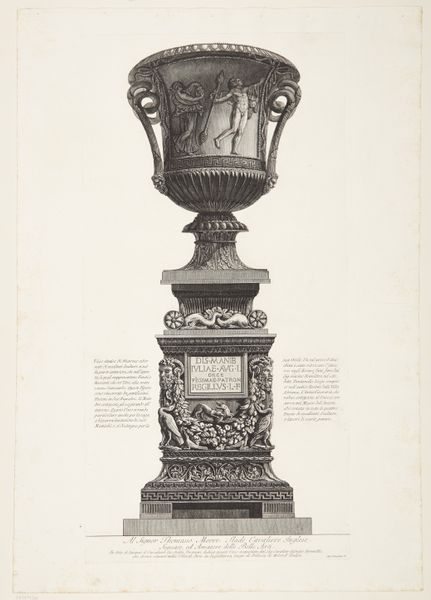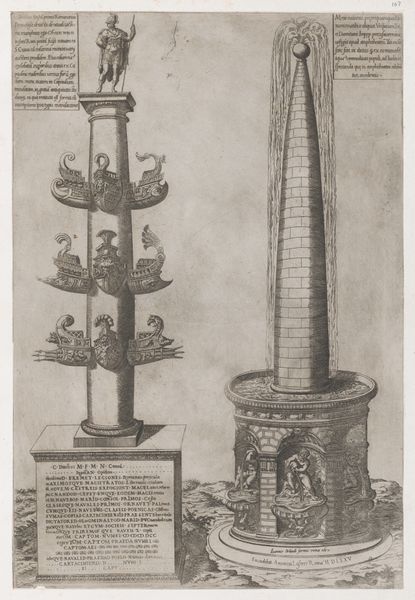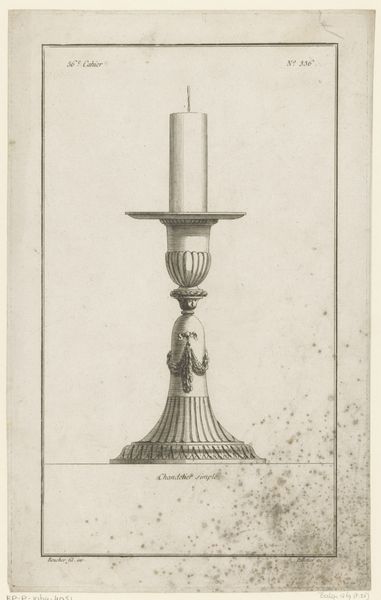
drawing, print, metal, engraving
#
drawing
#
neoclacissism
# print
#
metal
#
classical-realism
#
form
#
line
#
history-painting
#
engraving
Dimensions: height 655 mm, width 415 mm
Copyright: Rijks Museum: Open Domain
Curator: Today we’re looking at Giovanni Battista Piranesi's "Marmeren trireem op een voetstuk" or "Marble Trireme on a Pedestal," made in 1778. It’s currently held here at the Rijksmuseum. What's your immediate impression? Editor: An imagined monumentality, a sort of drawing of sculpture attempting to usurp architecture. The precision of the lines—they denote a world observed yet impossibly perfect. Is it meant to stand as a testament, or a mere design exercise? Curator: Piranesi, as you know, was fascinated by the grandeur of Roman antiquity. This engraving, etched on metal, meticulously depicts a marble trireme atop an ornate pedestal. The line work emphasizes the classical realism inherent in the envisioned structure, celebrating form above all else. Editor: I’m curious about the practicalities here. Piranesi depicts a trireme—a warship—as an object of adornment. What is the labor involved in quarrying marble? The transformation from raw material to a symbol of imperial power is considerable. Who were the hands that shaped this object? And how does that influence its reception in, say, the late 18th century? Curator: The drawing encapsulates Neoclassicism, reviving classical ideals—a clear statement about artistic principles. Note the crispness of the lines defining each curve and flourish. The form itself, a vessel on a stand, engages with ideas of structure, support, and elevation, almost daring you to extrapolate some theoretical hierarchy. Editor: That elevation speaks to more than just a visual hierarchy. It reveals something of 18th-century artistic patronage. Consider the inscription. "To Signora Margherita Carle, English Lady, amateur of fine arts," is not just decoration. It reveals the consumption practices that powered this aesthetic. Curator: Absolutely. The composition overall reflects Piranesi's vision, using exacting methods to show an ideal form. The artistry of the print itself captures that artistic and theoretical vision. Editor: But beyond that singular vision, there’s a wider social fabric present, woven through materials and their movement from extraction to display. Understanding that wider frame reframes the entire encounter. Curator: An excellent reminder to seek that deeper engagement. Editor: Indeed, from design to display.
Comments
No comments
Be the first to comment and join the conversation on the ultimate creative platform.

